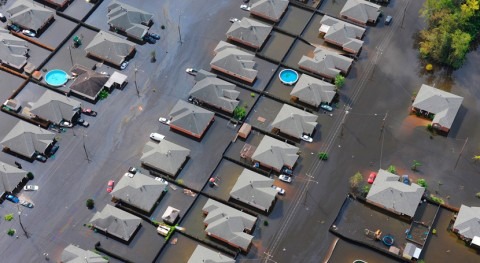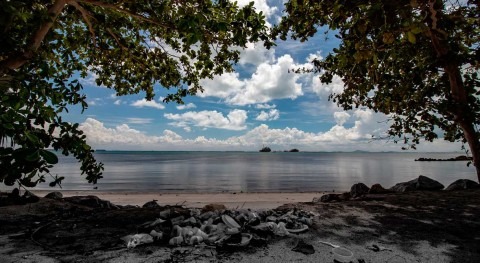As cities grow, the area of impervious surfaces they cover grows. In cities across the US, roads, rooftops, parking lots, sidewalks and driveways increased by an average of 326,000 hectares per year between 2012 and 2017.
When it rains, stormwater gathers on these surfaces or flows into gutters, storm drains and sewer systems. However, extreme precipitation events can overwhelm a city's capacity to transport stormwater, resulting in urban floods. The introduction of green infrastructures (GI), such as bioswales with permeable surfaces, has provided municipalities with a new tool to manage flood risk associated with rainfall. Cities including Portland, Phoenix and Atlanta have developed plans and invested in implementing GI to mitigate the risk of floods.
New research from Portland State University combines demographic data with the distribution of GI and geographic areas prone to rainwater flooding in Portland, Phoenix and Atlanta and asks whether these cities are equitably building GI to mitigate flood risks.
The paper, "Urban flood risk and green infrastructure: Who is exposed to risk and who benefits from investment? A case study of three US cities," appears in Landscape and Urban Planning.
According to the paper's lead author, Arun Pallathadka, a Ph.D. student in the Earth, Environment and Society program at Portland State, the research team found that the placement of GI in each of the cities inconsistently overlapped with areas prone to rainwater flooding, and non-white and low-income populations were more vulnerable to flood risk. Portland and Phoenix have increased investments in GI in neighborhoods with higher populations of non-white and low-income residents, marking a transition to more equitable flood risk management. In Atlanta, the risk of rainwater flooding was relatively low for non-white and low-income residents, though there was a substantial disparity in GI coverage.
"Flooding is the costliest natural hazard," Pallathadka said. "But when we talk about flooding, the focus is often on the floodplain, on rivers. But with climate change, we're expecting an increase in flooding associated with rainfall events. We wanted to know where the hotspots in cities are associated with a risk of flooding from rain, who are the people living in those communities, and where are cities placing infrastructure to help reduce the hazards."
In addition to the spatial, temporal and demographic analysis, the research team, which includes Heejun Chang, a professor of geography at Portland State and Jason Sauer and Nancy Grimm of Arizona State University, developed that can be used by researchers, city planners and policymakers to categorize neighborhood risk levels. Cities can use the tool to help guide investments in GI to neighborhoods most at risk of flooding from rainfall events.

A conceptual framework for understanding the distribution and implications of urban pluvial flood risk and green infrastructure (GI) in urban communities.
The methods deployed by the team provide cities with a novel approach to assessing the need for GI in neighborhoods prone to flooding associated with rainwater while also planning for the equitable distribution of those resources as they move ahead under the threat of increasing extreme precipitation events associated with a warming planet.





